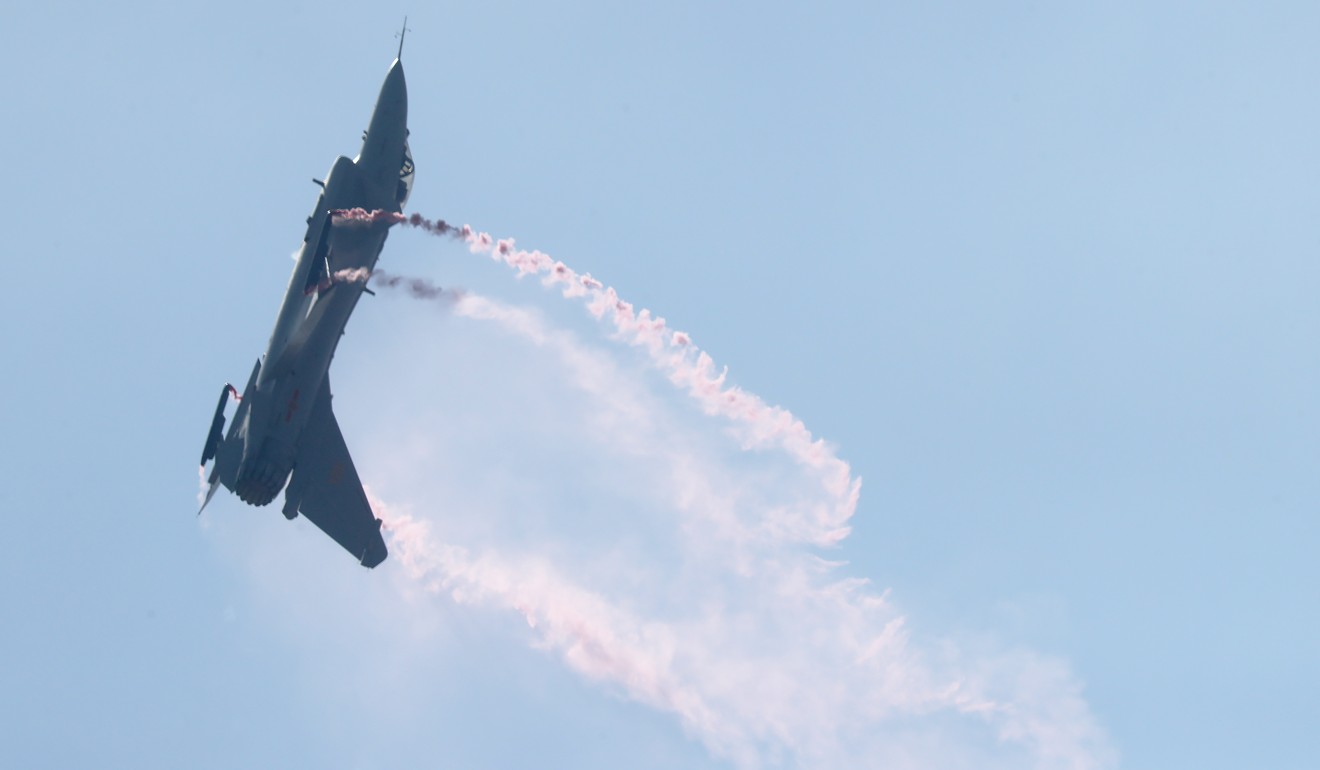
China scales back its biggest air show as trade war forces cost cuts
- Less extravagant displays and absent performers consistent with a toning down of previous shows’ confident style
- Lack of new warplanes this year compared with recent editions of the show
China has scaled back its biggest air show as the country grapples with slowing growth amid a trade war with the United States.
The six-day Airshow China, held every two years in the southern coastal city of Zhuhai, continued to attract a number of top Chinese military officials to its opening on Tuesday but put on a more subdued aerial display and offered simulations of hardware rather than real weapons systems.
The show has traditionally been a platform for Beijing to parade its growing aviation prowess and advanced weapons in front of aerospace executives, diplomats and international arms buyers since it began in 1996.
However, military insiders said the trade war and a lack of funding in the aftermath of the nationwide anti-corruption campaign driven by President Xi Jinping’s military overhaul forced organisers to try to lower costs this year.

Among the senior officials attending the opening were People’s Liberation Army Air Force General Xu Qiliang, who is a vice-chairman of the powerful Central Military Commission, and Air Force commander Ding Laihang.
Ding said the air force would use the air show as a platform “to enhance military exchanges with their counterparts from 41 countries”, adding that the show’s finale on Sunday would also mark the force’s 69th anniversary.
The opening day featured a half-hour display by the air force’s August 1st aerobatic team, and a six-minute show by three J-20 fighter jets.
Saudi and Pakistani pilots also conducted a fly-past in the afternoon but there was no sign of the Russian, European or British teams of previous years.
“The organisers did not invite the [Russian] Knights and Swifts teams this year, nor the Red Arrows from Britain, just because of a lack of funding,” a source familiar with the air show said.
“A more low-profile air show indicates the Beijing leadership wants to tone down its previous ‘overconfident’ propaganda style and return to its original taoguang yanghui [lie low] policy during the ongoing trade frictions with the US.”
US trade war casts long shadow over China’s biggest air show
Zhang Changhong, a spectator from state-owned China Aerospace Science and Technology Corporation, said: “I was hoping to see the Russian performance, which would be stunning. It was a bit disappointing that they aren’t here.”
Organisers said that more than 140 aircraft from home and overseas would be shown in the exhibition centre.
But many of the planes were displayed only on the ground in reduced simulation models, including the FC-31, which military experts have speculated might be developed into China’s second carrier-based fighter jet after the J-15.

Unlike past editions of the show in 2012, 2014 and 2016, when many new fighter jets and cutting-edge weapons were on display, military enthusiasts could not find any new warplanes this year.
“The budget was cut this year just because of the ongoing trade war between Beijing and Washington, which would definitely drag down China’s economic growth,” a military insider said.
“The previous one in 2016 was too high-profile, so leaders in Beijing believe this year’s should be restrained.”
After stealth fighters and jumbo jets at Zhuhai Air Show, China’s ‘secret weapon’: jet engines
About 770 exhibitors from 43 countries are taking part, according to organisers.
Compared with past editions that put more emphasis on flying and static displays, this year’s exhibition has focused mainly on dual-use military and civilian products, including the debut of an active phased array airborne early-warning radar called the “Silk Road Eye” – a new device to promote China’s “Belt and Road Initiative”.
The radar will be mounted on the KJ-2000 early-warning aircraft based on an IL-76 design, according to its developer, the 14th Institute of China Electronics Technology Group Corporation.
Guangdong governor Ma Xingrui announced that the next air show would be held in November 2020 in Zhuhai.
Tuesday’s opening was also attended by State Councillor Wang Yong, Guangdong Communist Party chief Li Xi, former PLA Air Force general Ma Xiaotian and former general staff chief Chen Bingde, as well as Leung Chun-ying and Edmund Ho Hau-wah, respectively the former chief executives of Hong Kong and Macau.


